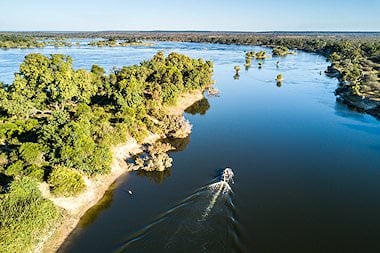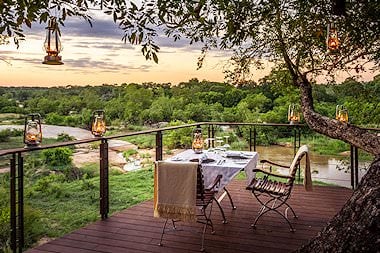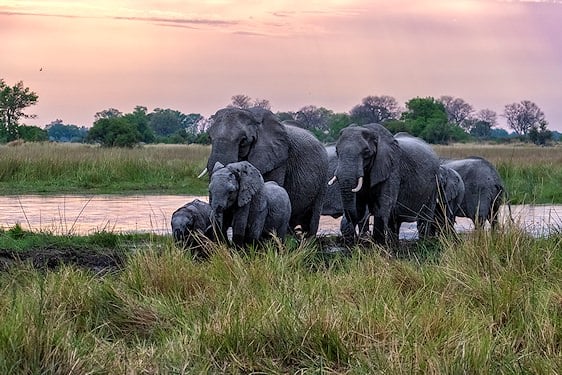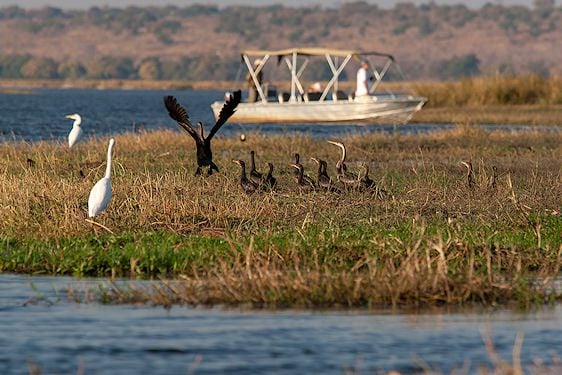- Home
- >
- African Travel
- >
- South Africa
- >
- National Parks
- >
- Kruger National Park
- >
- Mammals
- >
- African Wild Dog
Description
African wild dog is a lean, long-legged canid with large rounded ears and a patchwork coat of black, tan, and white—no two share the same pattern. Built for endurance, it relies on teamwork rather than stealth. Both sexes are similar in size, with slender muzzles and a white-tipped tail that doubles as a visual signal during a chase.

The range of wild dog has contracted markedly over the last century. Viable subpopulations now persist in parts of southern and eastern Africa, including Kruger National Park and adjoining private reserves, northern and central Botswana, and key landscapes in Tanzania and Kenya. Conservation programs in South Africa help manage a metapopulation, supporting connectivity and genetic flow between protected areas where possible.
Best Safari Tours for viewing Wild Dog
You could spot wild dog on this safari in Chobe National Park or the Okavango Delta if you book the Vic Falls and Botswana honeymoon.
This honeymoon package combines a safari in Phinda Private Reserve with a beach vacation in southern Mozambique.
A visit to Victoria Falls is combined with the magical wilderness of Chobe National Park in the north of Botswana.

Status
Wild dog is listed as Endangered. Fewer than a few thousand mature individuals remain across fragmented ranges, with total numbers roughly in the low thousands when all age classes are counted. Habitat loss and fragmentation, conflict with people and livestock, and infectious disease from domestic dogs are principal threats. In South Africa, coordinated metapopulation management and targeted vaccinations around reserves support ongoing recovery.

Habitat
Wild dog uses open woodland, mopane and acacia savanna, and mixed grassland with scattered cover that allows line-of-sight coordination during a chase. It generally avoids dense forest and true desert. Typical prey weigh 10–60 kg, and competition from lion and spotted hyena shapes space use; packs often hunt at first light and late afternoon, exploiting cooler temperatures and reduced competitor activity.

Social Organization
Wild dog lives in stable packs usually led by a dominant breeding pair. Group size varies widely, though many Kruger packs include 6–20 adults plus pups. Cooperative breeding is the rule: non-breeding helpers provision and guard young, and injured or elderly pack members are fed by regurgitation. Large home ranges and frequent dispersal by same-sex coalitions maintain gene flow between neighboring populations.
Finest Safari Areas in Africa for Encountering Wild Dog
We recommend the following National Parks and Private Reserves for the best chances of spotting the wild dog on safari game drives and bush walks.

Social Behavior
Before hunts, packs gather in lively greeting ceremonies of twittering calls, body rubbing, and tail wagging that synchronize activity. Pursuits use relay-style chases and flanking to exhaust prey over distance. Food sharing by regurgitation sustains pups, injured, and elders. Territorial defense includes scent marking by both sexes and high-pitched contact calls that help maintain cohesion across open country.

Reproduction
Breeding in the Kruger region typically peaks from April to July. After a gestation of about 70–73 days, the dominant female gives birth to 6–12 pups (occasionally more) in a den, often an old aardvark or porcupine burrow. Pups are guarded by babysitters while hunters forage and are fed by regurgitation. Denning lasts roughly 2–3 months before the pack becomes fully nomadic again.

Anti-Predator Behavior
Lion and spotted hyena are the main natural threats. Wild dog minimize risk by rapid consumption at kills, coordinated mobbing to distract intruders, and strategic den placement with constant attendants. When flushed from a kill, packs often depart quickly rather than fight, preserving energy for future hunts and keeping pups supplied via cached stomach contents and regurgitated meals.















